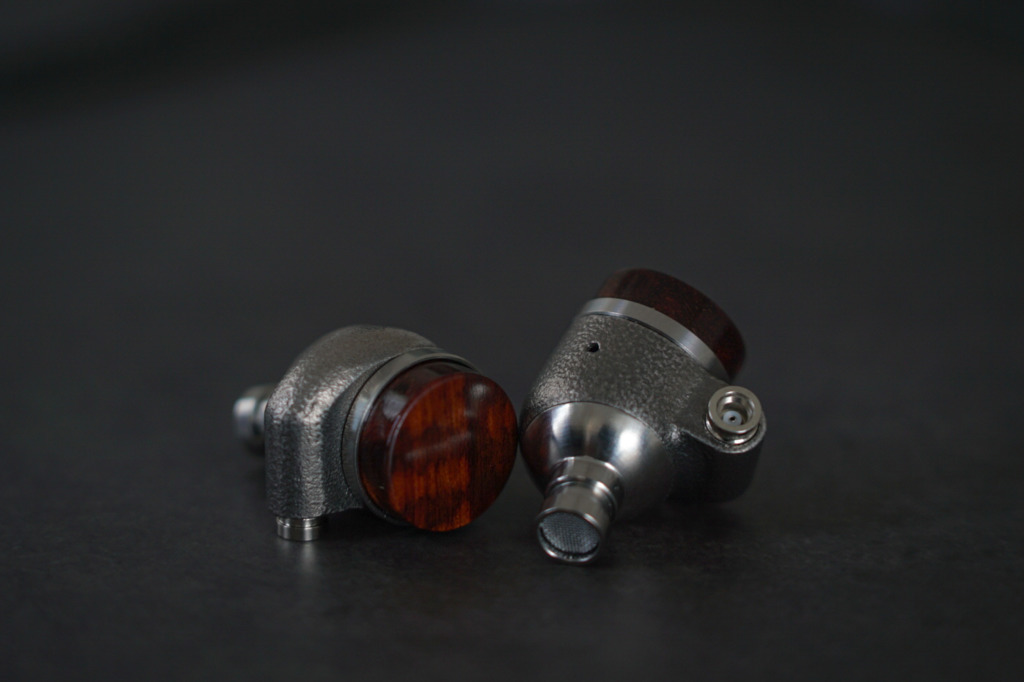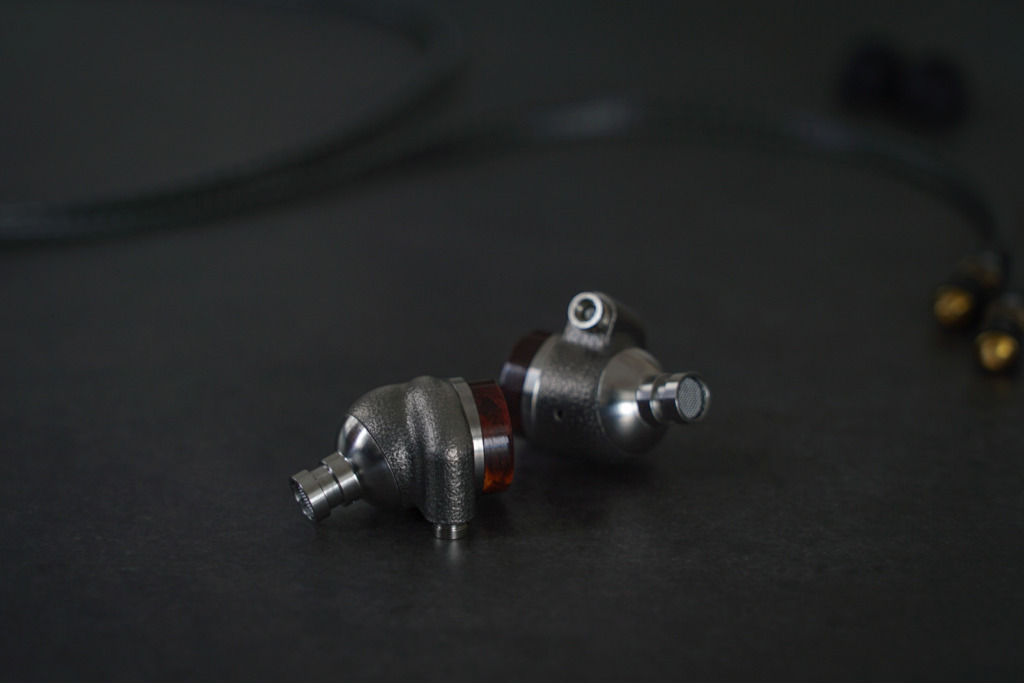LOAK2-TX01 is a model that is a renewal of LOAK-PROTOTYPE01. In this blog, I would like to provide details about LOAK2-TX01, compare its sound with other models, and explain the types of wood used for the rear enclosure. For ordering and basic information, please refer to the product page below.
Housing)
Front : Titanium.
Body : Titanium (3D printing).
Rear : Various types of wood, stainless steel, brass, copper.
The change from LOAK-PROTOTYPE to LOAK2-TX is the body housing. Both were 3D printed, but the manufacturer was changed to Japan, resulting in a higher performance and more sophisticated product. Problems that existed in the prototype enclosures, such as distortion and uneven stacking, have been improved.

Right : LOAK-TX
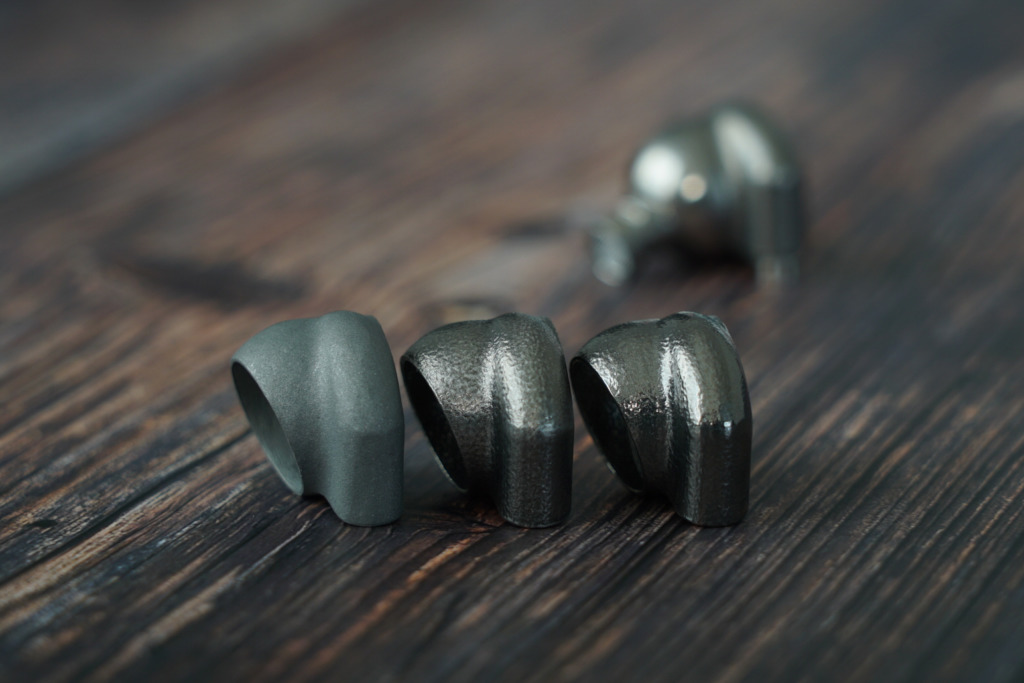
Right : LOAK-TX
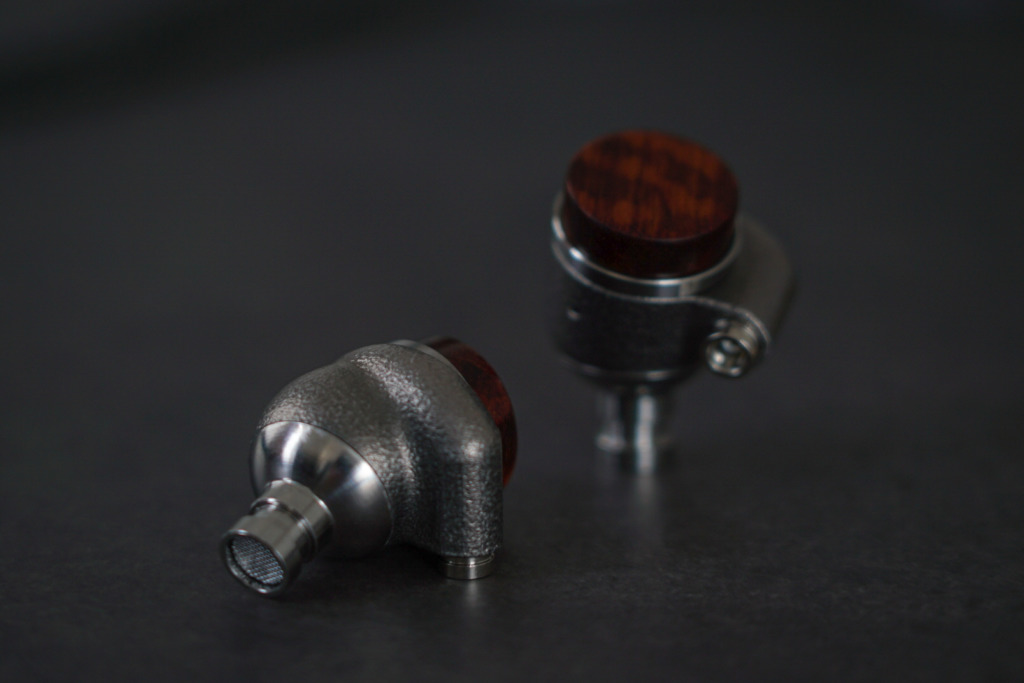
The front housing of the LOAK2 is nearly identical in shape to the previous LOAK, but the internal structure is slightly different, incorporating thin stainless steel in the area where the drivers are secured. While titanium and aluminum are excellent materials for transmitting sound from the drivers to the nozzle tip due to their low vibration damping, they are not as effective at dampening the vibrations of dynamic drivers. Therefore, by incorporating stainless steel into the contact surface of the drivers, we are able to effectively suppress the vibrations of the dynamic drivers and achieve powerful bass and stable sound without distortion.
The characteristics of sound and comparison with other models)
The LOAK-TX01 features almost the same sound as the old LOAK-PROTOTYPE01, characterized by clear, fast, and sharp high-mids, along with a dynamic driver’s powerful mid-bass. It retains resonance, gloss, and a spacious soundstage as its distinctive features.
The change in the manufacturing company of the 3D-printed housing for the LOAK-TX has resulted in a slight difference in hardness compared to the previous 3D-printed housing. The old PROTOTYPE housing had a stronger edge to the sound and a clearer graininess, while the TX housing has a smoother and more connected sound. This difference is subtle and may only become apparent upon direct comparison.
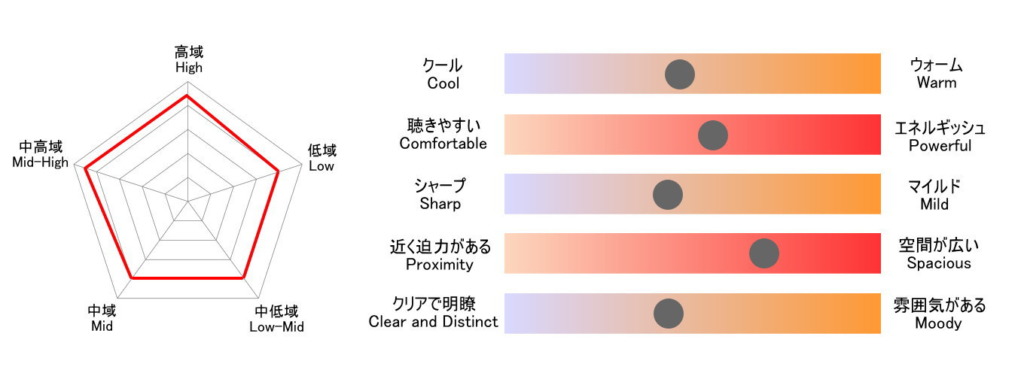
Comparison of sound with LOAK2-Ti(CL):
LOAK2-Ti(CL) is also a renewed model of the old LOAK-PROTOTYPE, like the LOAK-TX01, but the choice between 3D printing and CNC machining for the body housing affects the sound. In terms of sound profile, resolution, response speed, clarity, agility, resonance, richness, and spaciousness, I feel that the LOAK-TX01 is a notch above. Particularly, the bass in the TX01 model feels more robust and elastic. It has a clear contour while still providing a quick onset of sound, allowing the bass to expand firmly.
In fact, there isn’t much significant difference in frequency measurements between these two models. However, in terms of aspects that make music feel more real, such as the beauty of sound resonance, its richness, and the spaciousness it offers, TX01 is clearly superior to Ti(CL).
Comparison of sound with LOAK2-TX02:
When comparing the flagship models, LOAK2-TX02 and LOAK2-TX01, TX02 has a thicker and more powerful sound. Particularly in the mid to low-mid range, this is quite noticeable, as TX02 adds depth and atmosphere to the sound space. TX01, on the other hand, offers a clearer mid to low-mid range, providing better clarity. There’s also a difference in the warmth of the sound, with TX02 being warmer compared to TX01.
If you prefer a clear sound with distinct contours, resolution, sharpness, and emphasis on the high frequencies, then TX01 might be your choice. Conversely, if you value the immersive experience akin to a live performance, richness in resonance, and emphasis on the mid to low frequencies, then TX02 would be more suitable. I personally use both models depending on my preferences and the type of music I’m listening to, as it’s not a matter of one being superior to the other, but rather about matching the sound to my preferences and the music I’m enjoying at the moment.
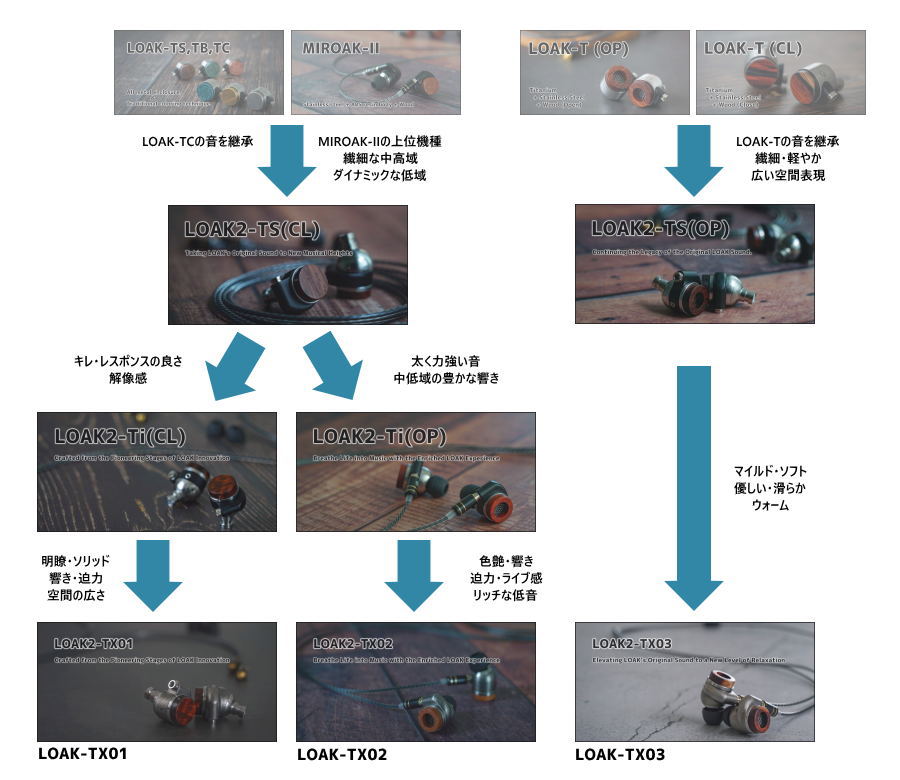
Regarding the choice of backplate)
This model shows significant differences in sound based on the choice of rear housing material or metal compared to the open-back (OP) type. Nevertheless, regardless of the chosen material, the sound of LOAK2-TX01 remains consistent, with no significant changes to resemble other models. However, upon close listening, slight differences in sound can be discerned.
For a tight and crisp sound, I recommend using hard and dense wood materials, such as ebony or even harder ones.
Conversely, for a slightly milder sound, opt for wood materials that are not overly hard. Rosewood or softer woods would be suitable.
For a lighter and slimmer sound, consider using woods that are hard but not excessively dense (woods with hardness relative to density). For example, padauk would be appropriate.
I chose Snakewood. Snakewood, one of the hardest woods available, offers a distinctively tight sound with clear contours. Additionally, according to 634EARS’ wood hardness-density chart, Snakewood is one of the few woods where hardness surpasses density. This type of wood tends to have clear mid-to-low range frequencies and is known for its lightness and spaciousness.
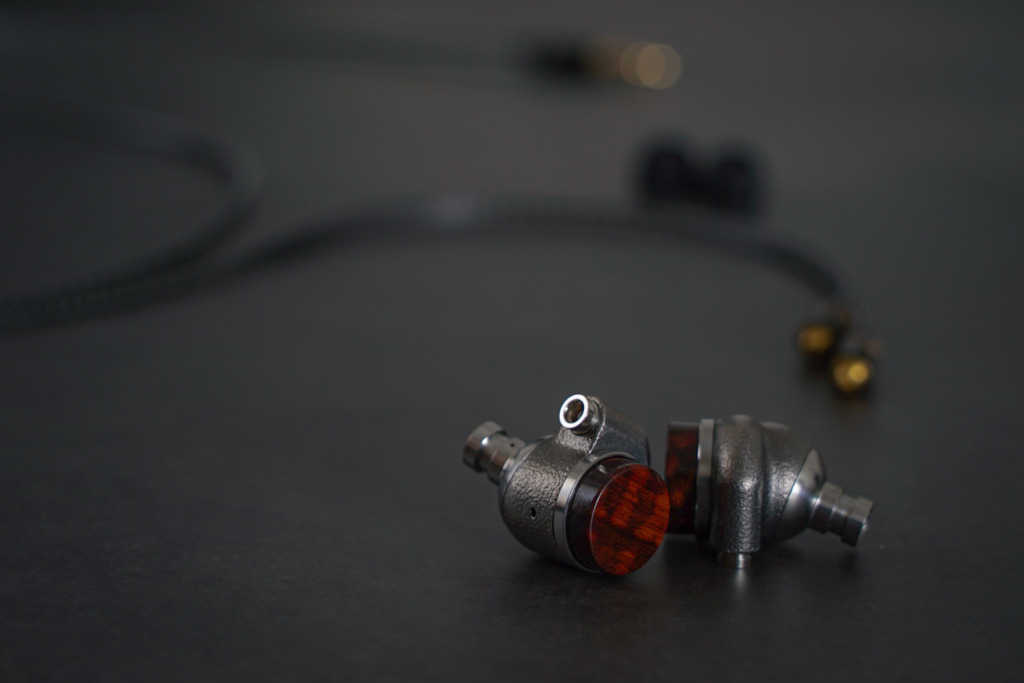
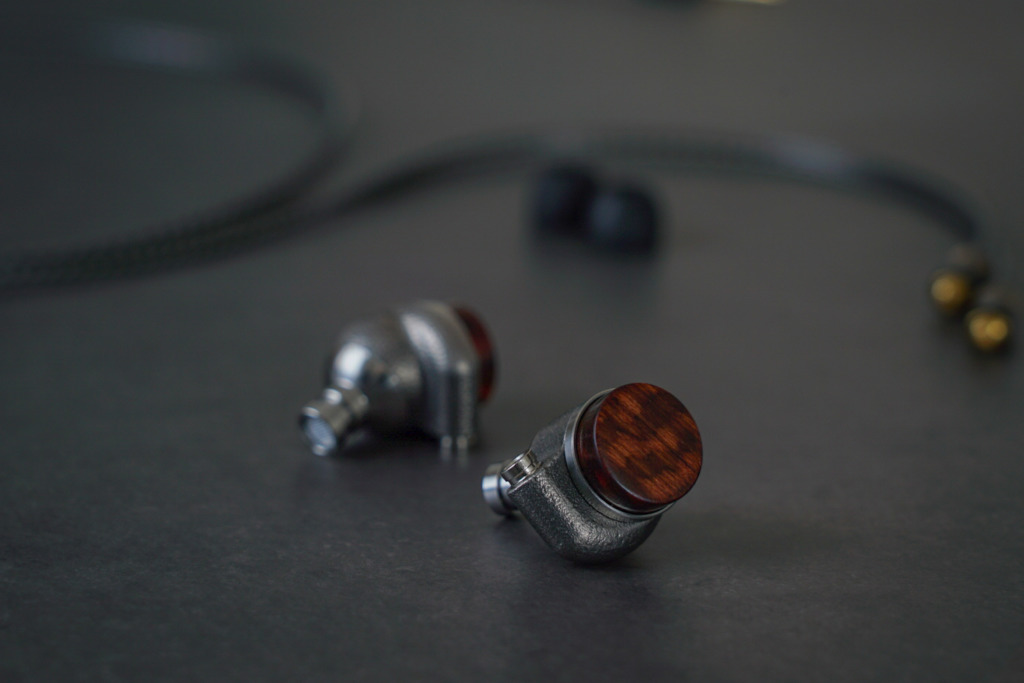
Metal materials are also available for selection. You can opt for colored metals by Momentum Factory Orii. Metals are processed slightly thinner than wood and hollowed out at the center to reduce weight. High-rebound materials are installed in the hollowed-out portion. This is because leaving the metal as a solid mass would add weight, and the strong rebound due to compression of air inside the rear housing would make the sound too harsh. Additionally, the high-rebound material installed at the center helps moderate the rebound of compressed air inside the rear housing and also provides moderate absorption, thereby mitigating the strong rebound of air caused by the hard and deformation-resistant metal. This allows the diaphragm to move dynamically without being too tight, resulting in a dynamic and voluminous sound.


